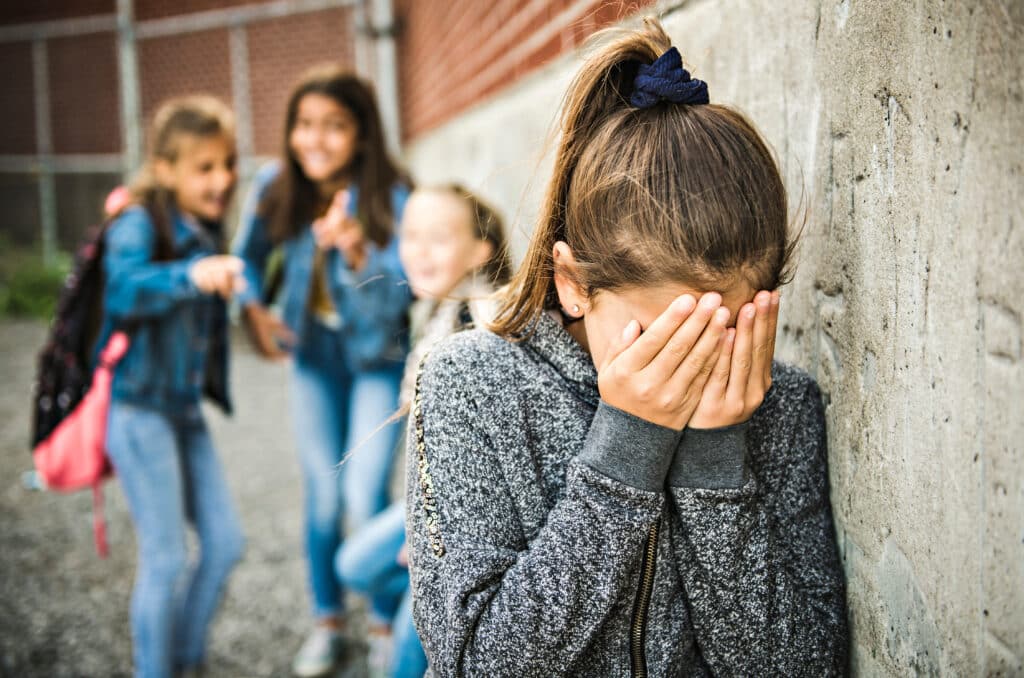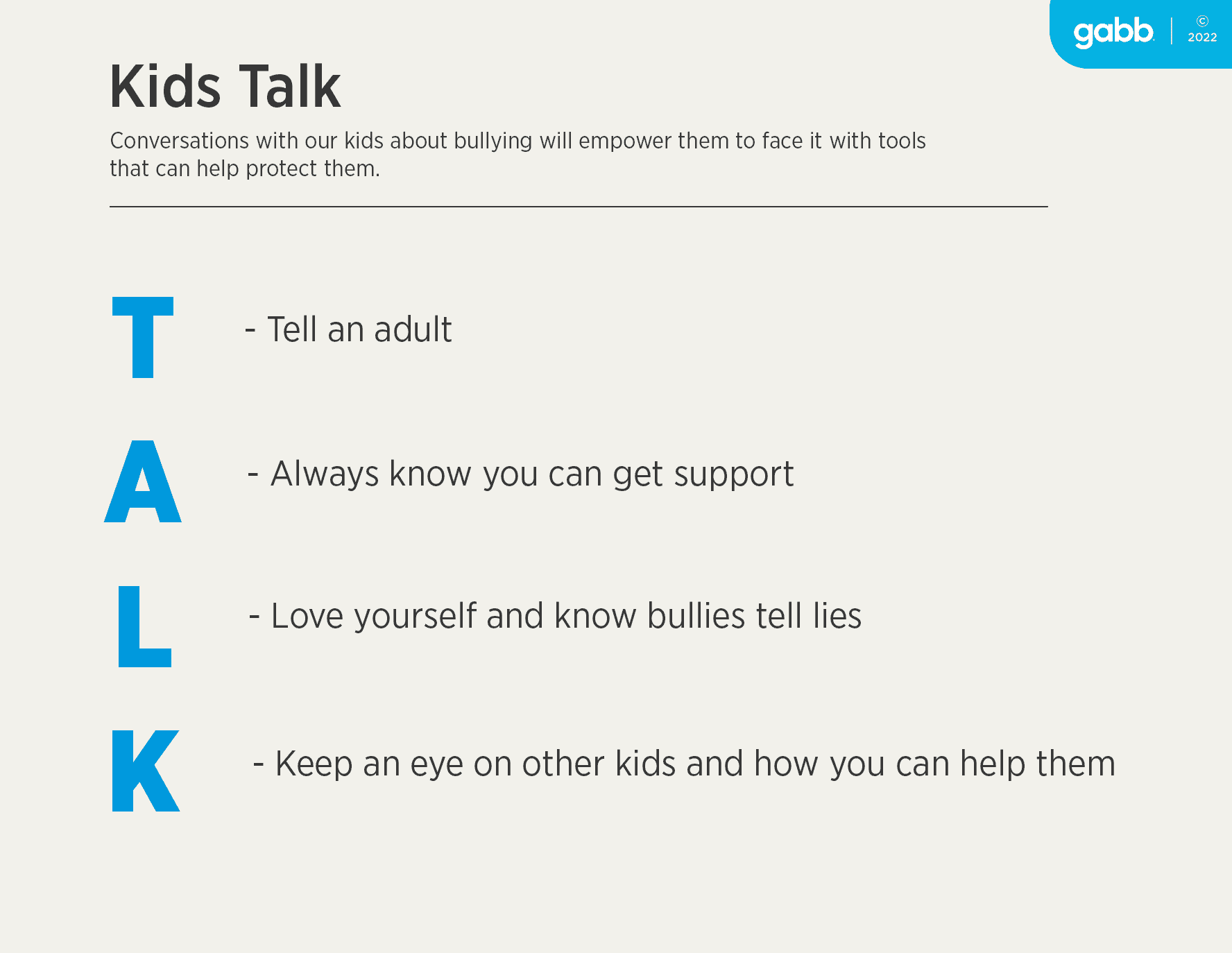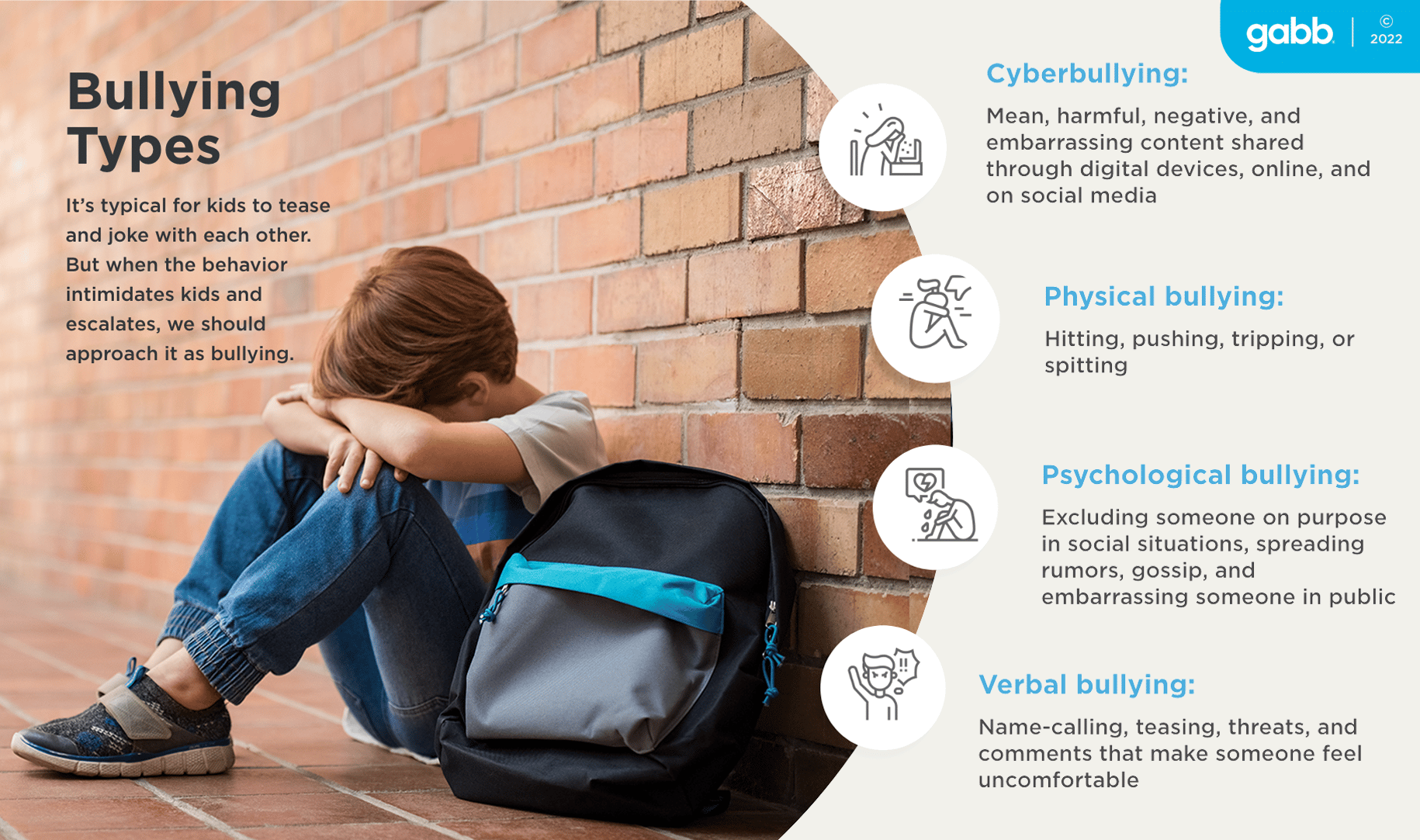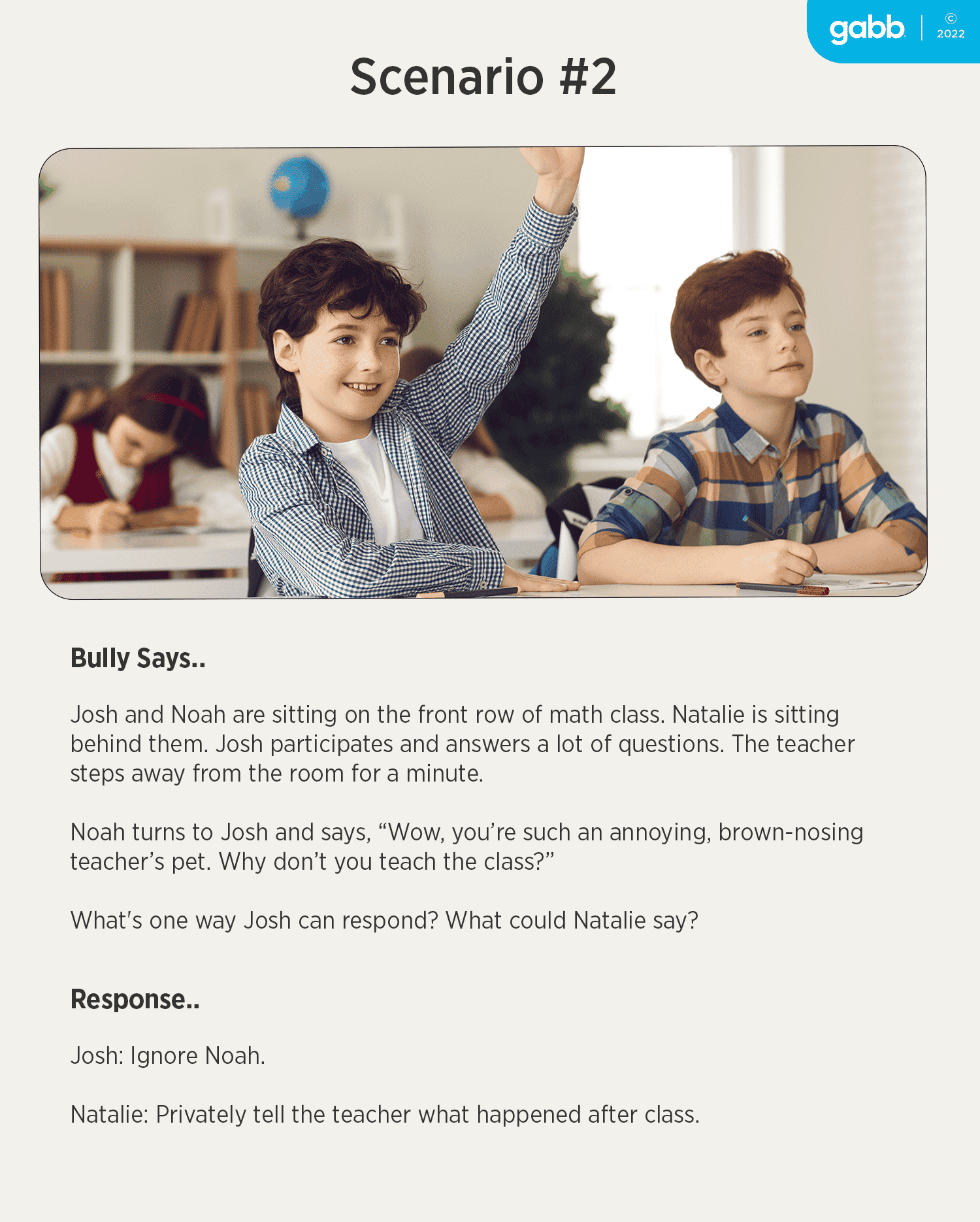Bullying Guide: Prepare and Empower Kids to Face Bullying
Back-to-School Guide for Parents
AUG 09, 2023
Bullying Guide: Prepare and Empower Kids to Face Bullying
Back-to-School Guide for Parents
It’s exciting to begin a new school year—new teachers, friends, and adventures. As parents, we hope our children are kind to others, and we worry about others being kind to them.
In addition to sending our kids off with new backpacks, pencils, and crayons, we can also prepare them for this new adventure by prepping them to deal with difficult social interactions.
Bullying is often online today, called cyberbullying. Gabb phones don’t have any social media apps to keep your child safer.
Whenever bullying happens, we can help our kids face bullying by teaching them to TALK.
Conversations with our kids about bullying will empower them to face it with tools that can help protect them.

The Prevalence of Bullying
According to the National Center for Education Statistics, 22% of students between the ages of 12-18 said they were bullied during the 2019 school year. [1]
In the 2019 school year, 22% of students aged 12-18 reported being bullied.
Bullying is more prevalent in rural areas and most often affects minorities. Those who have been victims repeatedly identify their bullies as bigger, wealthier, and more popular. [2]

Bullying Types
It’s typical for kids to tease and joke with each other. But when the behavior intimidates kids and escalates, we should approach it as bullying.
As such, it is important to recognize the different forms of bullying [2]:
Don’t See Yourself as a Victim
Victims of bullying often think they are to blame, that there is something about the way they look, talk, or act that caused the bullying. Parents can teach kids to not internalize bullying or think they brought it on. We can empower kids to set boundaries with our support.
I am . . . two of the most powerful words. For what you put after them shapes your reality.
—Gary Hensel
In psychology, The Pygmalion Effect (also known as Self-Fulfilling Prophecy) is where thoughts and expectations influence an individual’s actions. Labeling our kids as victims, or allowing them to label themselves, suggests the behavior is permanent and unchangeable.
When we give our kids tools like TALK, they will feel more able to seek the help they need to improve the situation.
How to Combat Bullying
Social and emotional competency are key to combating bullying behaviors. Helping our children master these skills will also build empathy and protect their mental health.
Kids who learn social and emotional skills are better off academically, have fewer problems with substance use, and have healthier relationships with peers. [6]
5 Ways Kids Can Combat Bullying
- Love Yourself: Say positive affirmations every day.
Practice! Remind your child daily of their best qualities and have them share what they like about themselves with you. - Share: Discuss feelings openly. Be sure to acknowledge your child’s feelings and label them.
Practice! Identify emotions using a game of charades. - Think First: Teach kids how to fight their impulses and practice self-control. Before acting, consider the
consequences of your actions.
Practice! Red Light/Green Light and Simon Says are helpful games to teach the concept of thinking before acting. - Spread Kindness: Consider how your actions affect others.
Practice! Ask your child what they did today that was nice for someone else. Incorporate it into their bedtime routine. - Reach out: Talk with a trustworthy adult and ask for help.
Practice! Use puppets or pretend play to help kids express their worries and thoughts.
The anti-bullying toolbox for kids to stand up to bullies
As parents, we can prepare kids to face meanness and aggression, but we will not be there in the moment. We can empower our kids to deal with bullies by providing them with the right resources.
The strategies below can be used by the child being bullied and also those who are bystanders. Practice using these tools through role-playing.
Bullying is never ok and should not be expected to go away independently. Discuss the situation with your child, and then contact teachers, administrators, coaches, or other leaders for advice.
Bullying can be mitigated through intervention. Stopbullying.gov recommends reporting the bullying to law enforcement if serious threats are made.
The U.S. Department of Health and Human Services also has a helpline available 24/7 for less severe cases. Call 1-800-273-8255 to speak with someone directly. [2]
Bystanders can help
Bystanders to bullying in action may not know what to do. There’s always the fear of being bullied too, or getting hurt. But when bystanders do nothing to help, it sends the message to the bully that being unkind to others is ok.
When kids do not intervene, they often experience feelings of guilt (Padgett, 2013).
Many times, bystanders take videos of the encounter and post them online. This is not helpful and can cause additional pain for the child being bullied. Some things bystanders can do to help:
- Don’t laugh, participate, or become an audience for the bully
- Tell the bully to stop
- Help the child being bullied in any way you can
- Be inclusive of everyone, especially those who are the targets of bullying
- If you do take a video, only share it with your parents, teachers, and school administrators.
It takes courage and compassion to stand up to a bully, but there is strength in numbers. Once a bystander takes a stand, it encourages others to do the same.
Role-playing ideas
Practice acting out the following scenarios together. Be prepared to heap on the praise for healthy responses and guide your child when you see their plan may be less effective or escalate the situation.
Have your child come up with ways to react to the situations as if they were the victim and as a bystander. Express that there is not just one single way to respond.
How Parents Can Help Kids Who Are Being Bullied
Parents can help prevent bullying by becoming involved in their child’s school and frequently communicating with teachers, school staff, and guidance counselors.

According to a study in the Scandinavian Journal of Psychology, parents and schools working together using bullying prevention programs can identify kids who are beginning to be bullied and prevent escalation. [4] These programs have also been shown to reduce the frequency of bullying by 20-23 %. [5]
Bullying prevention programs can reduce bullying by up to 23 percent.
As parents, watching our kids be bullied is extremely difficult and heartbreaking. We want to protect them and help them. We can! Listen to their concerns, get the facts of the situation, and devise a plan together for how to make the bullying stop.
How can I support a child who is being bullied?
- Assure the child that bullying is not their fault
- Listen and find out what is going on
- Talk with your child and together, decide how to address the situation
- Come up with a plan together for the next encounter
- Don’t give up—bullying may take some time to stop
- Contact your child’s teacher and school administrators. Discuss the possibility of meeting together with the other child’s parents.
– stopbullying.gov
Build your child up
We can also help our kids by building up their self-esteem by helping them strengthen their friendships and, if possible, finding after-school programs that they’re interested in.
Participating in group activities is a great way to build self-confidence and make like-minded friends.
Sports participation contributes to the positive development of mind and body leading to higher self-confidence and self-esteem.
—Talbot
Moving Forward
We are the biggest advocates for our children. The best way to teach them how to stand up for themselves is through regular conversations. They need to know if the situation is too big to handle, we will help them navigate it and make it stop.
How to you help your child in bullying situations? Let us know in the comments!



















Success!
Your comment has been submitted for review! We will notify you when it has been approved and posted!
Thank you!